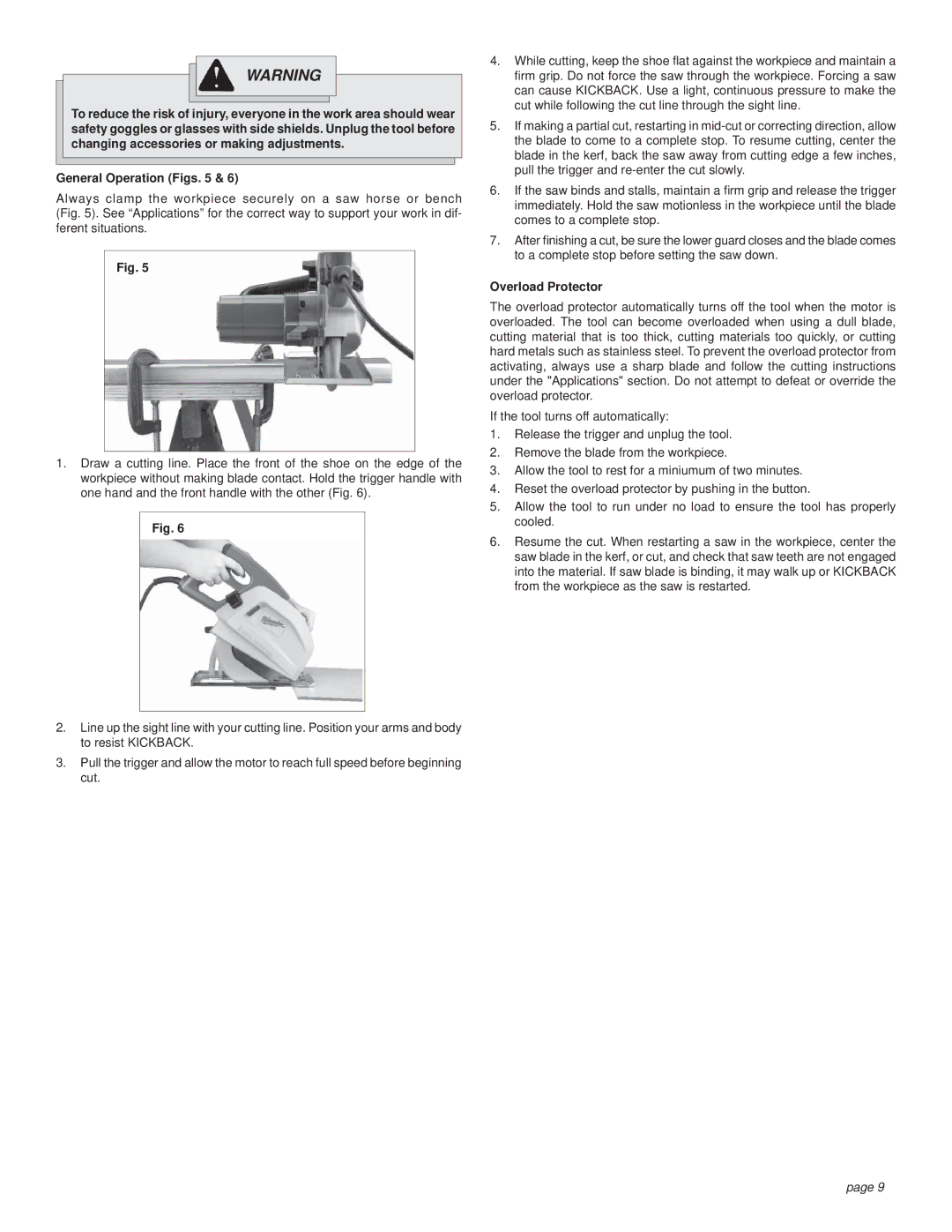
WARNING
To reduce the risk of injury, everyone in the work area should wear safety goggles or glasses with side shields. Unplug the tool before changing accessories or making adjustments.
General Operation (Figs. 5 & 6)
Always clamp the workpiece securely on a saw horse or bench (Fig. 5). See “Applications” for the correct way to support your work in dif- ferent situations.
Fig. 5
1.Draw a cutting line. Place the front of the shoe on the edge of the workpiece without making blade contact. Hold the trigger handle with one hand and the front handle with the other (Fig. 6).
Fig. 6
2.Line up the sight line with your cutting line. Position your arms and body to resist KICKBACK.
3.Pull the trigger and allow the motor to reach full speed before beginning cut.
4.While cutting, keep the shoe flat against the workpiece and maintain a firm grip. Do not force the saw through the workpiece. Forcing a saw can cause KICKBACK. Use a light, continuous pressure to make the cut while following the cut line through the sight line.
5.If making a partial cut, restarting in
6.If the saw binds and stalls, maintain a firm grip and release the trigger immediately. Hold the saw motionless in the workpiece until the blade comes to a complete stop.
7.After finishing a cut, be sure the lower guard closes and the blade comes to a complete stop before setting the saw down.
Overload Protector
The overload protector automatically turns off the tool when the motor is overloaded. The tool can become overloaded when using a dull blade, cutting material that is too thick, cutting materials too quickly, or cutting hard metals such as stainless steel. To prevent the overload protector from activating, always use a sharp blade and follow the cutting instructions under the "Applications" section. Do not attempt to defeat or override the overload protector.
If the tool turns off automatically:
1.Release the trigger and unplug the tool.
2.Remove the blade from the workpiece.
3.Allow the tool to rest for a miniumum of two minutes.
4.Reset the overload protector by pushing in the button.
5.Allow the tool to run under no load to ensure the tool has properly cooled.
6.Resume the cut. When restarting a saw in the workpiece, center the saw blade in the kerf, or cut, and check that saw teeth are not engaged into the material. If saw blade is binding, it may walk up or KICKBACK from the workpiece as the saw is restarted.
page 9
